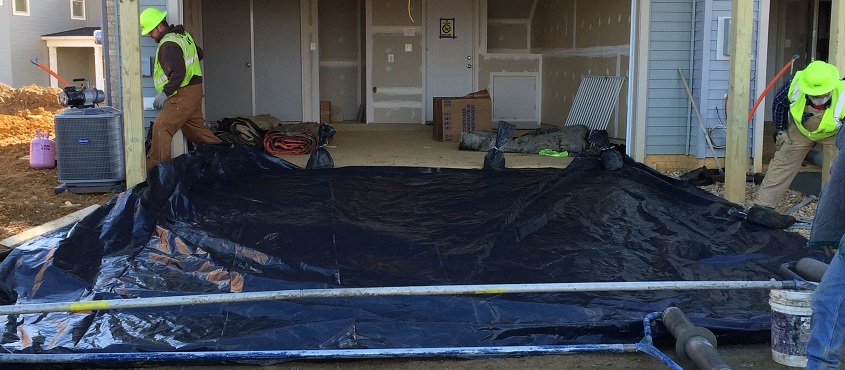Date: December 15, 2016
News - Avoid Cold Weather Concrete Problems

As the temperatures drop, it’s only a matter of time before we get our first cold weather concrete phone call. It’s never pretty. The calls are about a variety of problems, but the cause is the same: cold weather. If we plan for cold temperatures, we can avoid problems and make more money instead of dealing with expensive customer call backs.
Why Does This Happen?
When water and cement come in contact with each other, a process called cement hydration begins. This process forms crystals that bond together and give concrete its strength. If the water freezes before it fully hydrates the cement, it will severely damage the concrete.
The trick is to get the concrete to at least 500 psi (an initial set) before the concrete can freeze. But there’s a problem. The colder the temperature outside, the slower the concrete sets. Every drop of 25 degrees (F) of ambient temperature generally doubles the set time of the concrete. That makes it harder to protect the concrete before it reaches that minimum 500psi.
We have two problems. One, the water in the concrete might freeze. Two, the lower temperatures slow the concrete set so much that it increases the risk of the first problem.
What Can I Do to Protect from Problems?
Since there are two main cold weather concrete problems, there are two main strategies to avoid problems.
Speed Up the Set
During the colder months, at Chaney Enterprises, we automatically put hot water it in the concrete to speed up set time and keep the concrete internal temperature as high as possible.
You may request chemical additives called accelerating admixtures for your concrete. The admixtures can dramatically decrease set time so you can place faster. A little bit of extra admix cost is a lot less money that paying your crew to wait for the concrete to set, or worse, having to repair cold weather damage.
Keep water excess water out of the concrete. Water is necessary for hydration, but any extra water slows the set of the concrete and can freeze. Pouring the concrete at the lowest reasonable slump (consistency and flowability) can avoid those problems. You can also add water reducing admixtures which will increase the slump and workability of the concrete without adding more water.
Keep the Concrete Warm
The best thing to do is avoid the worst of the cold as much as you can. Plan your pour for the warmest days of the week. You can also pick a time of day when temperatures are already above freezing and are in the process of rising. That will give you warmer weather and more time to work.
The hydration process creates its own heat. We want to do everything we can to trap that heat inside. Curing blankets are the best way to do that. These insulated blankets keep the cold out and the heat of hydration in.
With proper planning you can avoid the costly customer callbacks that can come from pouring concrete in cold weather. We’re always happy to help to provide advice specific to you project.